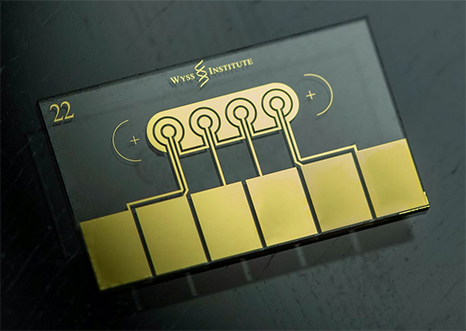Researchers at the Harvard Wyss Institute have developed an electrochemical device, called the eRapid sensor, that can assist clinicians in quickly characterizing someone’s COVID-19 infection, including identifying the infecting viral variant and the nature of someone’s immunity to the virus in terms of whether it is vaccine-mediated or natural immunity. Monitoring these characteristics could help to personalize treatment for individuals and also provide data for drug development and inform government decisions on the best way to manage COVID-19 in the community. When antibodies from a blood sample bind within the device, it precipitates a biochemical cascade that affects the electrical signal, allowing the researchers to measure antibody presence and levels in the sample.
While the COVID-19 pandemic has slipped from the headlines, superseded by other dramatic world events, the virus has not gone away and continues to mutate as it spreads. Pandemic surveillance, which involves monitoring changes in the virus as well as keeping track of how it is affecting people is essential in avoiding a repeat of the early days of the pandemic where many countries had to introduce strict restrictions to reduce viral spread.
However, the technology necessary to analyze patient samples to determine the details of each infection is expensive, bulky, and not applicable for rapid testing. This issue prompted these researchers to adapt an electrochemical sensor platform that they had previously developed to detect viral variants and the antibodies against them.

“The combined features of eRapid make it an extremely useful platform for the fast and multiplexed detection of antibodies emerging in patients against a growing and fluctuating number of viral and other antigens, and for following an individual’s antibody levels over time as we showed in our new study,” said Pawan Jolly, a researcher involved in the study. “We took the Wyss’ eRapid platform through an extensive de-risking program by engineering new nanochemistry, manufacturing, and sensing abilities. At this point, we’d like to see our technology benefit as many patients in as many disease areas as possible, including, of course, infectious diseases such as COVID-19.”
In the tests conducted by the researchers so far, they analyzed 93 patient blood samples and required just 1.5 µL of sample and 10 minutes for each analysis. The technology successfully identified that 54 of the samples came from patients with SARS-CoV-2 infections, and demonstrated 100% sensitivity and specificity.
“The study’s findings further validate that our much-evolved version of the eRapid diagnostic technology is capable of a fast, accurate, and differentiated assessment of antibodies against viral antigens in individuals,” said Don Ingber, another researcher involved in the study. “We can obtain these results at extremely low cost using extremely small samples that individuals could easily self-collect and test at home or send to central laboratories. Thus, eRapid opens the opportunity of being used as a tool for pandemic surveillance and therapeutic monitoring, not only in the present but also for future pandemic and epidemic outbreaks.”
Study in journal Biosensors and Bioelectronics: Rapid quantification of SARS-CoV-2 antibodies in clinical samples with an electrochemical sensor
Via: Wyss Institute
